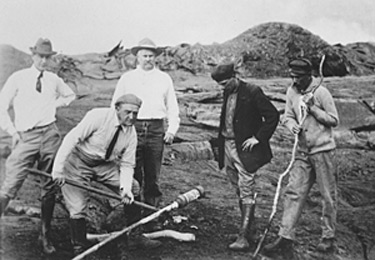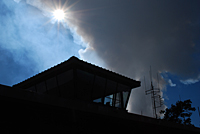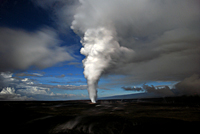

|
Thomas A. Jaggar, founder of the Hawaiian Volcano Observatory (HVO), first visited Hawai`i 100 years ago during a decade-long period of exploration in which he witnessed first-hand the destructive power of volcanic processes. His quest began in 1902, when Jaggar traveled to the West Indies just 13 days after two volcanoes there erupted with devastating consequences. The first eruption at La Soufriere on the island of Saint Vincent resulted in 1,500 deaths. It was followed only a few hours later by a second, more tragic, eruption at Mount Pelee on Martinique, in which 28,000 people perished. Jaggar's experience at Martinique set the stage for his work on volcanoes and earthquakes during the next half century. After Martinique, Jaggar's expeditions took him to the scenes of earthquakes and volcanic eruptions in the Aleutians, Central America, and Japan. In 1908, an earthquake near Mount Etna in Italy killed 125,000 people. Following that natural disaster, Jaggar declared that "something must be done" to support systematic studies of volcanic and seismic activity. The next year, in 1909, he traveled at his own expense to Hawai`i, where he determined that Kīlauea was to be the home of the first American volcano observatory. His vision was to "protect life and property on the basis of sound scientific achievement." In 1912, construction began on the new Hawaiian Volcano Observatory with support from Hawai`i businesses, private endowments through the Hawaiian Volcano Research Association, and funding from the Massachusetts Institute of Technology. HVO has since been managed by the U.S. Weather Bureau (1919-1924), U.S. Geological Survey (1924-1935), and National Park Service (1935-1947). The USGS became the permanent administrator of HVO in 1947. In 2012, HVO will celebrate its centennial anniversary, a milestone made possible through the vision and efforts of Thomas A. Jaggar. Today, in 2009, as we look back at Jaggar's first visit to Kīlauea 100 years ago, we also reflect on the landmark anniversaries of several significant eruptions on Kīlauea and Mauna Loa:
25th — 1984 Mauna Loa summit and northeast rift zone eruption
|
Archive of previous
feature stories
|






